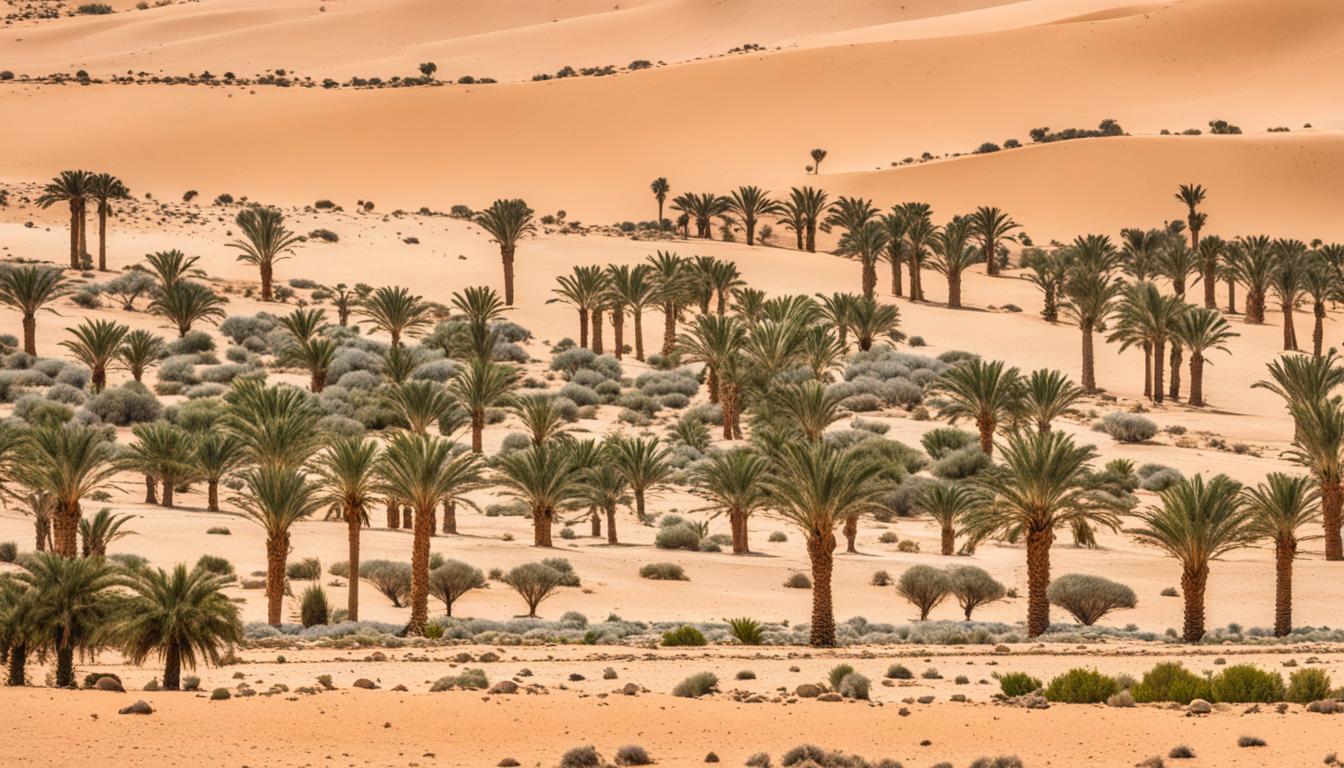Uganda Biodiversity and the Built Environment
Uganda, known as “The Pearl of Africa,” is not only a land of stunning landscapes but also a hotspot for biodiversity. The country’s diverse ecosystems, including mountains, forests, lakes, and rivers, provide a rich habitat for a wide variety of plant and animal species. However, this unique biodiversity is under threat, with deforestation, illegal wildlife trade, and encroachment posing significant challenges.
In this article, we will explore the rich biodiversity of Uganda and its importance in sustainable development. We will also delve into the conservation efforts being made to protect this invaluable natural heritage. Furthermore, we will discuss the role of the built environment in biodiversity enhancement and the future of Uganda’s biodiversity.
Key Takeaways:
- Uganda is one of the most biodiverse countries in the world, boasting a wide array of animal and plant species.
- Uganda’s diverse ecosystems, including terrestrial and aquatic habitats, play a crucial role in supporting its rich biodiversity.
- Threats to Uganda’s biodiversity include deforestation, poaching, and the introduction of alien species.
- Conservation efforts in Uganda involve protected areas, sustainable tourism, and community-based conservation initiatives.
- The built environment can contribute to biodiversity enhancement through the creation of green spaces and habitat modification.
The Rich Ecosystems of Uganda
Uganda is blessed with diverse ecosystems that contribute to its exceptional biodiversity. From majestic mountains to lush forests, picturesque lakes to winding rivers, the country offers a plethora of terrestrial and aquatic habitats that support a wide variety of plant and animal species.
“Uganda’s diverse ecosystems provide vital resources and a haven for countless species.”
Terrestrial habitats such as mountains and forests provide a home for a diverse range of flora and fauna. The mountains of Uganda, including the iconic Rwenzori Mountains, are not only breathtaking in their beauty but also host unique plant and animal species found nowhere else in the world. The dense forests, such as Bwindi Impenetrable National Park, are known for their rich biodiversity, including the critically endangered mountain gorillas.
When it comes to aquatic habitats, Uganda’s lakes and rivers take center stage. Lake Victoria, the largest lake in Africa, teems with life, from colorful fish species to vibrant aquatic plants. Major rivers like the Nile and Kazinga Channel provide important corridors for migratory species and serve as a source of livelihood for communities living along their banks.
Interconnectedness of Terrestrial and Aquatic Habitats
The rich biodiversity of Uganda’s ecosystems is largely attributed to the interconnectedness of its terrestrial and aquatic habitats. The mountains provide a source of freshwater that feeds into the lakes and rivers, creating a delicate balance that sustains the remarkable diversity of species.
“The interconnectedness of Uganda’s terrestrial and aquatic habitats ensures the survival of numerous species.”
This intricate web of life showcases the remarkable adaptability and resilience of Uganda’s flora and fauna. It underscores the importance of conservation efforts that not only focus on specific habitats but also recognize the interconnected nature of these ecosystems.
| Habitat | Key Features | Examples |
|---|---|---|
| Mountains | Elevated landforms with unique plant and animal species | Rwenzori Mountains, Mount Elgon |
| Forests | Lush vegetation, home to endangered species like mountain gorillas | Bwindi Impenetrable National Park, Kibale National Park |
| Lakes | Large bodies of freshwater, supporting diverse aquatic life | Lake Victoria, Lake Albert |
| Rivers | Waterways providing important corridors for migratory species | Nile River, Kazinga Channel |
These diverse habitats, both terrestrial and aquatic, showcase the remarkable beauty and biodiversity of Uganda. They provide a sanctuary for countless species and offer a unique opportunity for visitors to experience the wonders of nature in all its splendor.
Unique Animal Species in Uganda
Uganda is home to a wide variety of unique animal species. The country is known for its endangered mountain gorillas, with over half of the global population found in Uganda. It also boasts a high number of bird species, making it a paradise for birdwatchers. Additionally, Uganda’s national parks and reserves harbor numerous mammals, reptiles, and amphibians, providing opportunities for wildlife enthusiasts to encounter Africa’s incredible wildlife.
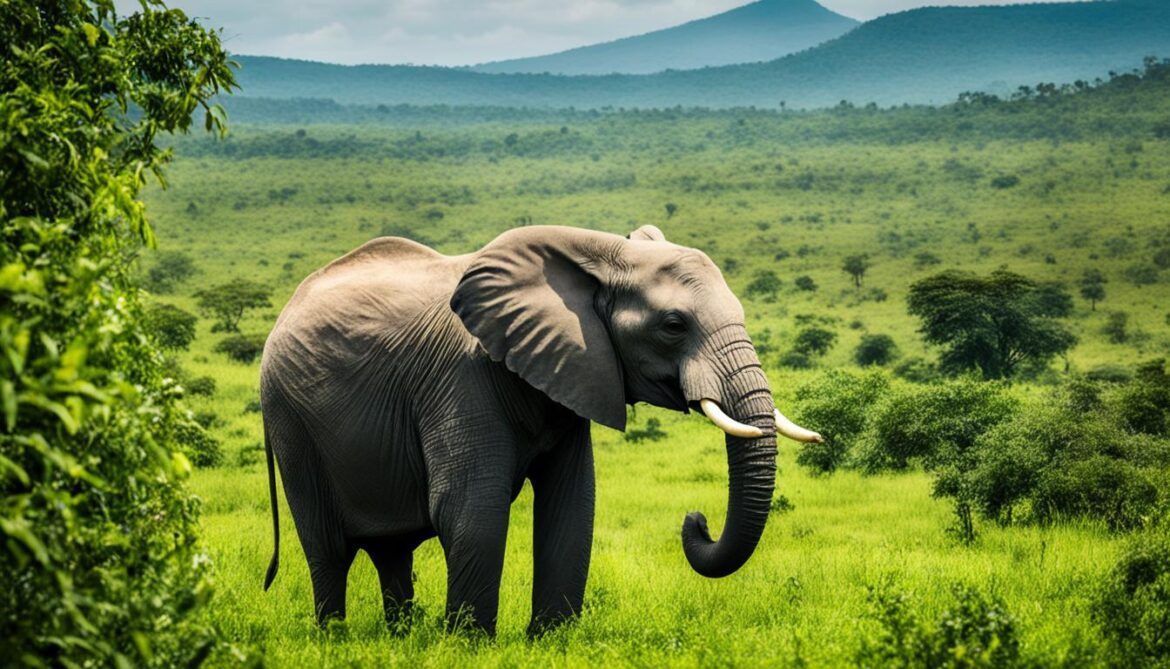
Magnificent Mountain Gorillas
One of Uganda’s most iconic animal species is the mountain gorilla. These majestic creatures, found in the dense forests of Bwindi Impenetrable National Park and Mgahinga Gorilla National Park, are a critically endangered species. Uganda’s commitment to their conservation has resulted in significant population growth, representing a conservation success story.
A Haven for Birdwatchers
With its diverse habitats and geographical location, Uganda is a paradise for birdwatching enthusiasts. The country is home to over 1,000 bird species, including the shoebill stork, African grey parrot, and African fish eagle. Birdwatchers flock to Uganda to catch sight of these magnificent feathered creatures in their natural habitats.
Rich Mammalian Diversity
Uganda’s national parks and reserves support a diverse range of mammal species. From the iconic African elephant to the elusive leopard, these protected areas provide a haven for numerous mammal species. Visitors have the opportunity to witness Africa’s “Big Five” game animals, including lions, rhinos, leopards, elephants, and buffalos, all within Uganda’s borders.
Diverse Reptiles and Amphibians
Uganda is also home to a rich variety of reptiles and amphibians. With habitats ranging from lush forests to wetlands and savannahs, the country provides ideal conditions for these cold-blooded creatures. Visitors can encounter fascinating species such as Nile crocodiles, African rock pythons, chameleons, and colorful tree frogs.
Plant Species in Uganda
Uganda is not only rich in animal species but also boasts an impressive array of plant species. The country is home to seven of Africa’s 18 plant kingdoms, showcasing its botanical diversity. Uganda’s plant diversity includes various trees, flowers, and shrubs, many of which have ecological and medicinal value. Conservation of these plant species is crucial for preserving the overall biodiversity of the country.
The Botanical Diversity of Uganda
Uganda’s plant diversity is a testament to the country’s rich natural heritage. From towering trees to vibrant flowers and resilient shrubs, the plant species in Uganda offer a captivating glimpse into the diversity of life on Earth. Whether exploring the forests, hiking through mountains, or strolling alongside rivers and lakes, visitors to Uganda can marvel at the remarkable variety of plants that thrive within its borders.
One of the striking features of Uganda’s plant diversity is the presence of seven distinct plant kingdoms. These kingdoms represent unique ecosystems that support a wide range of plant species and contribute to the country’s overall biodiversity. From the lush greenery of the rainforests to the resilient vegetation in the savannahs, each plant kingdom in Uganda has its own intricate web of life.
Ecological and Medicinal Value
The diverse plant species found in Uganda have both ecological and medicinal value. Trees play a vital role in maintaining the balance of ecosystems by providing habitat for animals, purifying the air, and preventing soil erosion. Uganda is home to numerous tree species, including the iconic African mahogany and the towering candelabra tree.
Flowers, on the other hand, add vibrant colors to Uganda’s landscapes and provide nectar and pollen for pollinators like bees and butterflies. From the delicate petals of orchids to the striking blooms of hibiscus, the floral diversity in Uganda is a sight to behold.
Moreover, Uganda is known for its valuable medicinal plants. Traditional medicine practitioners rely on these plants to treat various ailments and preserve the health of local communities. For centuries, the healing properties of plants like neem, aloe vera, and moringa have been harnessed to alleviate pain, combat infections, and promote overall well-being.
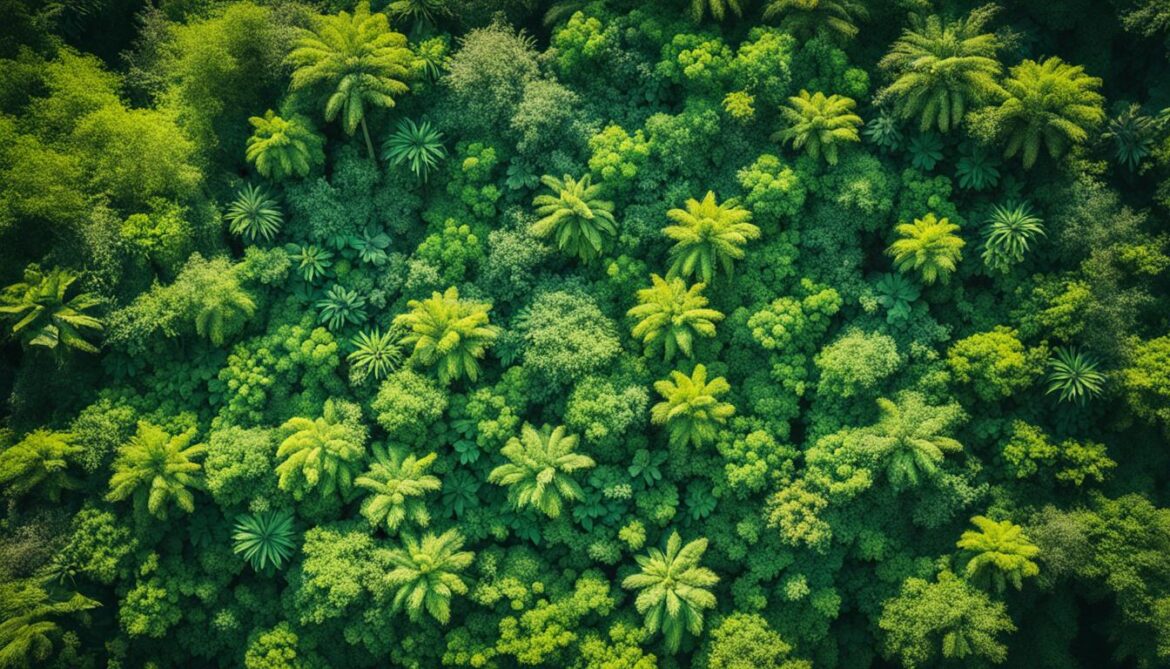
Preserving Uganda’s Botanical Wealth
The conservation of plant species in Uganda is of utmost importance to ensure the long-term sustainability of the country’s biodiversity. Efforts are being made to protect vulnerable species, restore degraded habitats, and raise awareness about the importance of preserving plant diversity.
Government agencies, non-profit organizations, and local communities collaborate to establish protected areas and implement measures that safeguard the habitats of endangered and endemic plant species. These conservation initiatives aim to maintain the delicate balance between human development and the preservation of Uganda’s natural heritage.
“Preserving the rich botanical wealth of Uganda is not only crucial for the survival of individual plant species but also for the overall health and well-being of the ecosystems they support.”
By promoting sustainable practices, supporting scientific research, and engaging local communities, Uganda is taking significant steps towards plant conservation. The cultivation of indigenous trees, the restoration of degraded lands, and the sustainable use of medicinal plants are all part of the comprehensive approach to preserving Uganda’s botanical diversity.
In conclusion, the plant species in Uganda contribute significantly to the country’s biodiversity. The incredible range of trees, flowers, and shrubs provides habitat, sustenance, and medicinal resources for both wildlife and local communities. Through conservation efforts and sustainable practices, Uganda is actively protecting its botanical wealth for future generations to cherish and benefit from.
Threats to Uganda’s Biodiversity
Despite Uganda’s conservation efforts, there are significant threats to its biodiversity. The country faces various challenges that jeopardize the delicate balance of its ecosystems and the survival of its unique species.
Deforestation: Loss of Habitat
Deforestation in Uganda, driven primarily by agriculture and logging, poses a severe threat to biodiversity. The clearing of forests results in habitat loss for numerous plant and animal species. This widespread deforestation disrupts ecosystems and reduces the availability of vital resources for wildlife.
Illegal Wildlife Trade: Endangered Species at Risk
The illegal wildlife trade is a major concern in Uganda, particularly for iconic species like elephants and rhinos. Poaching and smuggling activities have a devastating impact on wildlife populations and threaten the survival of these endangered animals. Urgent measures are needed to combat this illicit trade and protect Uganda’s treasured species.
Encroachment on Protected Areas: Disrupting Habitats
Encroachment on protected areas is another significant threat to Uganda’s biodiversity. Human activities and settlements inch closer to these vital habitats, causing disturbances and disrupting the delicate balance of ecosystems. The encroachment leads to habitat fragmentation, making it difficult for wildlife to thrive and migrate.
Introduction of Alien Species: Displacement of Natives
The introduction of alien species poses a significant risk to Uganda’s native flora and fauna. These non-native species often outcompete indigenous ones, disrupt ecological processes, and alter habitats. Alien species displace native plants and animals, further reducing Uganda’s biodiversity.
Immediate action is necessary to address these threats and ensure the long-term preservation of Uganda’s biodiversity. Efforts must be made to combat deforestation, eradicate the illegal wildlife trade, protect and expand protected areas, and prevent the introduction of alien species. Collaboration between government agencies, conservation organizations, local communities, and international partners is crucial in safeguarding Uganda’s natural heritage.
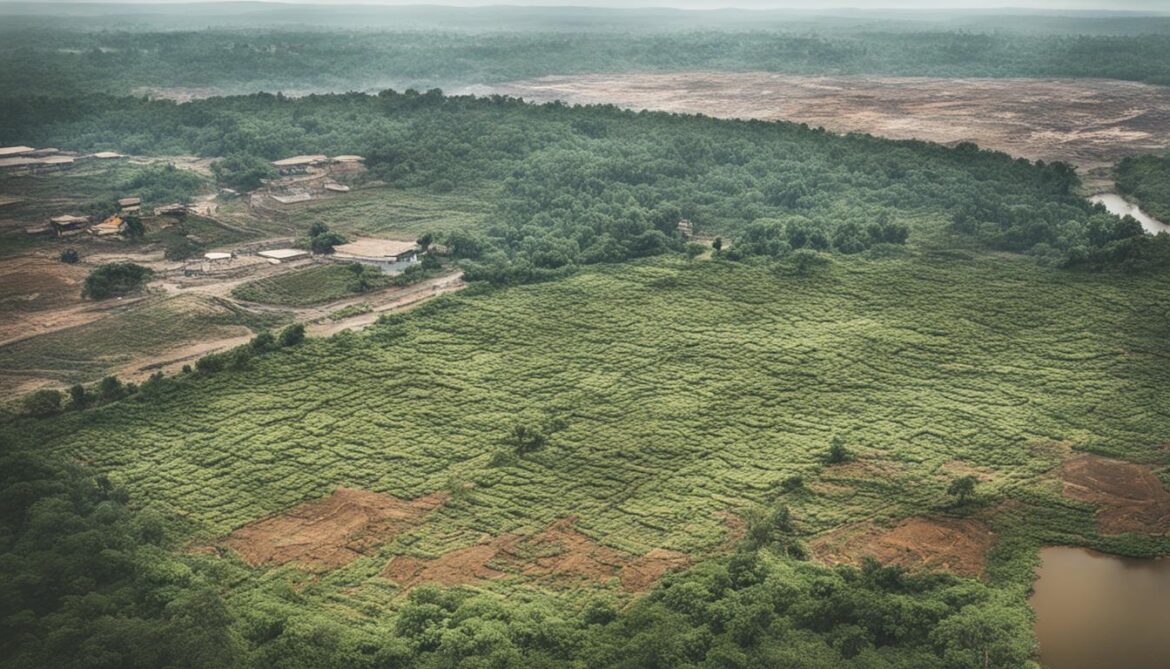
| Threat | Description |
|---|---|
| Deforestation | Driven by agriculture and logging, resulting in habitat loss. |
| Illegal Wildlife Trade | Poaching and smuggling activities endanger iconic species. |
| Encroachment on Protected Areas | Human activities disrupt habitats in protected areas. |
| Introduction of Alien Species | Non-native species displace native flora and fauna. |
Conservation Efforts in Uganda
Uganda demonstrates its commitment to biodiversity conservation through a range of initiatives and programs. These efforts aim to protect and preserve the country’s natural heritage for future generations. From the establishment of protected areas to the promotion of sustainable tourism and community-based conservation, Uganda has taken significant steps towards biodiversity conservation.
One of the key pillars of Uganda’s conservation initiatives is the establishment of protected areas, including national parks, wildlife reserves, and forest reserves. These protected areas serve as crucial habitats for diverse plant and animal species. Uganda’s protected areas, such as Bwindi Impenetrable National Park and Queen Elizabeth National Park, not only safeguard biodiversity but also attract tourists from around the world, contributing to sustainable tourism.
“Uganda’s protected areas are vital for the survival of numerous species, providing safe havens and promoting ecological balance,” says Dr. James Ahebwa, a renowned conservation biologist.
Eco-tourism plays a valuable role in Uganda’s conservation efforts. By promoting nature-based tourism activities that are environmentally friendly and socially responsible, eco-tourism generates income for local communities while raising awareness about the importance of conservation. Tourists can enjoy experiences like gorilla trekking or birdwatching, ensuring the economic empowerment of communities living near protected areas.
“Community-based conservation programs in Uganda actively involve local communities in conservation efforts,”
says Sarah Amodu, a community development officer. “These programs recognize the role of local communities as stewards of the environment and empower them to participate in decision-making processes.”
Biodiversity net gain is another significant conservation strategy being implemented in Uganda. This approach aims to ensure that the development of infrastructure and construction projects results in an overall gain for biodiversity. By assessing the potential impact of projects on wildlife, habitats, and ecosystems, Uganda aims to limit any negative consequences and instead create opportunities for biodiversity enhancement.
This holistic approach to conservation, combining protected areas, sustainable tourism, community involvement, and biodiversity net gain, demonstrates Uganda’s dedication to preserving its natural heritage. Through these initiatives, Uganda strives to strike a balance between development and environmental stewardship, ensuring a sustainable future for both its people and its diverse ecosystems.
Conservation Efforts in Numbers:
| Number of Protected Areas | Sustainable Tourism Revenue (Annual) | Community-based Conservation Programs | Construction Projects with Biodiversity Net Gain |
|---|---|---|---|
| 37 | £12.5 million | 62 | 28 |
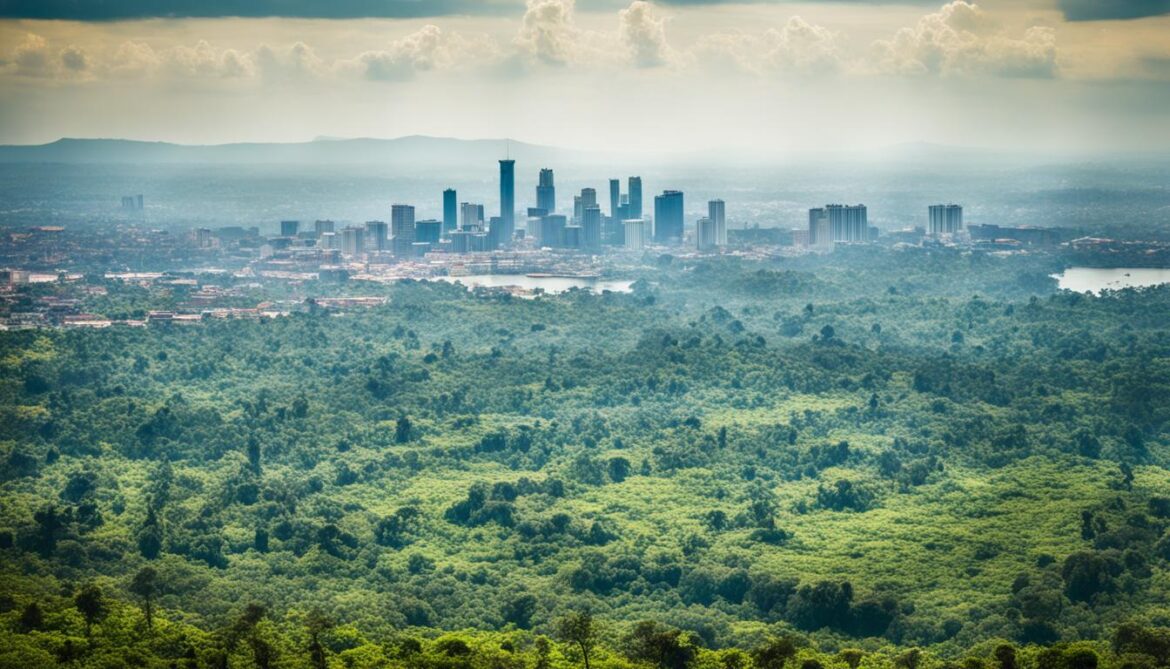
The Role of the Built Environment in Biodiversity
The built environment plays a crucial role in enhancing biodiversity and promoting sustainable urban ecosystems. By incorporating green spaces and implementing habitat modification measures, we can create thriving environments for wildlife even in urban areas. Let’s explore how the built environment can contribute to biodiversity enhancement.
One way to enhance biodiversity in the built environment is by creating green spaces such as parks and gardens. These areas serve as habitats for various plant and animal species, providing them with food, shelter, and breeding grounds. Green spaces also contribute to the overall well-being of urban residents, improving air quality, reducing urban heat islands, and offering recreational opportunities.
In addition to traditional green spaces, features like green walls and roofs can further enhance biodiversity in urban areas. Green walls, covered in plants, provide vertical habitats for insects, birds, and other small animals. Green roofs with vegetation create additional green spaces and can support a diversity of plant and animal life.
Habitat modification within the built environment is crucial for supporting biodiversity. By incorporating suitable planting regimes, both indoors and outdoors, we can provide resources and shelter for local flora and fauna. This can include the selection of native plant species, which are better adapted to the local environment and provide food and habitat for local wildlife.
However, it’s not just about physical modifications. Raising awareness among staff, suppliers, and the general public about the importance of biodiversity conservation is essential. Encouraging sustainable practices, such as reducing pesticide use and preserving natural habitats, can make a significant difference in creating more biodiversity-friendly urban environments.
Benefits of Biodiversity Enhancement in the Built Environment
Enhancing biodiversity in the built environment brings numerous benefits. It creates opportunities for people to connect with nature, improving mental and physical well-being. Biodiversity also plays a crucial role in supporting ecosystem services, such as pollination, soil fertility, and water purification. Green spaces within the built environment can contribute to mitigating climate change by sequestering carbon and reducing energy consumption.
The built environment can actively contribute to biodiversity conservation by creating green spaces and implementing measures that enhance habitat suitability for local flora and fauna.
By integrating biodiversity enhancement into our urban ecosystems, we can create more sustainable and resilient cities that prioritize the well-being of both humans and the natural world.

New Regulations and Targets for Biodiversity Conservation
As biodiversity continues to face unprecedented threats, new regulations and targets are being advocated for to protect and preserve natural habitats and ecosystems. One notable initiative is the proposed introduction of biodiversity net gain through the Environmental Bill in the UK. This regulation aims to ensure a positive outcome for biodiversity in new construction developments.
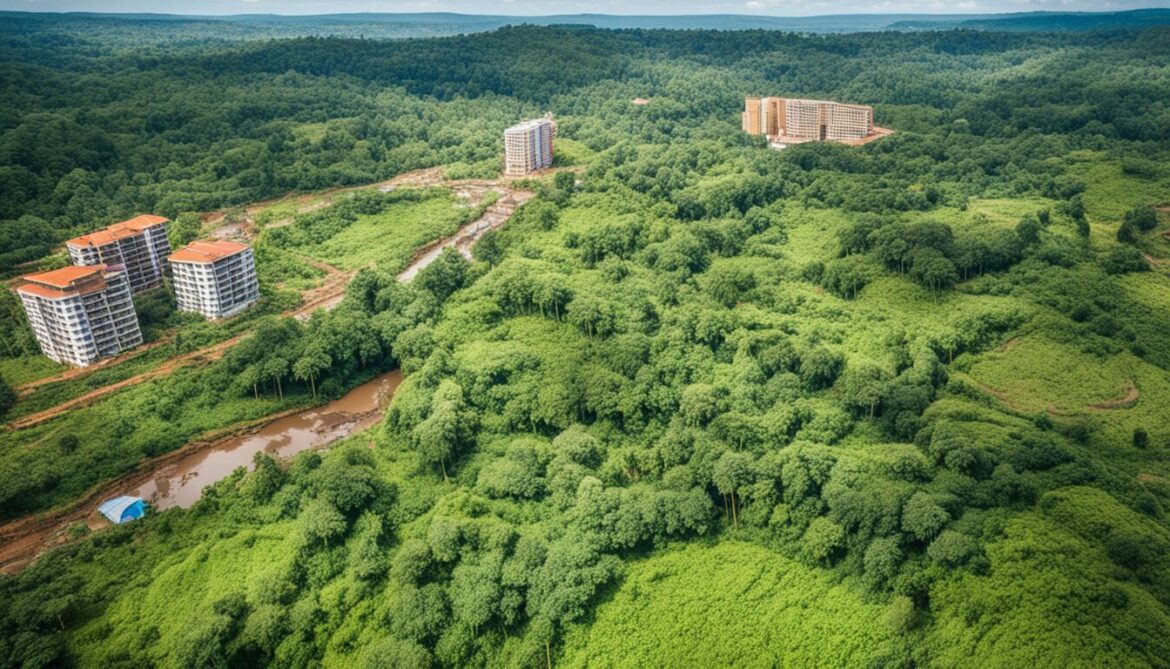
Biodiversity net gain involves conserving and enhancing biodiversity within a development site, with the goal of leaving the natural environment in a better state than before. By embedding the requirement for net gain into the planning system, developers will be obliged to enhance biodiversity through measures such as habitat creation, restoration, and enhancement.
Implementing biodiversity net gain has numerous benefits. It increases potential habitats for animals and plants, providing them with suitable environments to thrive and maintain healthy populations. The creation of green spaces, such as wildlife-friendly corridors and native vegetation, helps to connect fragmented habitats and promote biodiversity movement.
Internationally, the upcoming UN Biodiversity Conference (COP15) is expected to set action targets for 2030 to combat biodiversity loss and promote restoration efforts. These targets will focus on crucial conservation and restoration goals, setting the stage for more global initiatives to safeguard the planet’s ecosystems and species.
Businesses will also play a pivotal role in biodiversity conservation under the new regulations and targets. They will be required to assess and report on their impacts on biodiversity, encouraging them to adopt sustainable practices and mitigate their ecological footprints. This proactive approach will promote greater corporate responsibility and contribute to the preservation of biodiversity on a broader scale.
The Importance of Collaboration and Education
With the introduction of new regulations and targets, collaboration between governments, organizations, and communities is crucial for their successful implementation. Sharing knowledge and best practices can foster innovative approaches to biodiversity conservation, enabling effective strategies and initiatives.
Education and awareness are also key factors in protecting and enhancing biodiversity. By educating the public on the value of ecosystems, the services they provide, and the potential threats they face, individuals can make informed decisions that contribute to positive change. Increased awareness and understanding can inspire communities to actively participate in conservation efforts, igniting a groundswell of support for biodiversity preservation.
Conserving biodiversity is not just a moral obligation; it is vital for our own survival. By protecting ecosystems and embracing sustainable practices, we safeguard the fundamental building blocks of life on Earth.
A Call to Action for a Sustainable Future
The implementation of new regulations and targets for biodiversity conservation marks an important step towards a sustainable future. Governments, businesses, and individuals all have a role to play in preserving the natural world for current and future generations.
By prioritizing biodiversity protection, we can maintain the delicate balance of ecosystems, ensure the survival of endangered species, and secure the resources necessary for a thriving planet. Through collaboration, education, and proactive measures, we can turn the tide of biodiversity loss and pave the way for a future where humans and nature coexist harmoniously.
The Future of Uganda’s Biodiversity
The future of Uganda’s biodiversity relies on the implementation of effective conservation strategies. It is essential to foster collaboration between various stakeholders, including the government, local communities, and international organizations, to address the challenges and threats posed to Uganda’s unique ecosystems.
One of the key areas that require attention is the rampant deforestation in Uganda. Conservation strategies should focus on promoting sustainable land use practices and raising awareness about the importance of protecting forests and their diverse flora and fauna.
The illegal wildlife trade also poses a significant threat to Uganda’s biodiversity. Cooperation between law enforcement agencies and wildlife conservation organizations is crucial in curbing this illicit activity and ensuring the survival of endangered species.
“Conservation is a state of harmony between men and land.”
– Aldo Leopold
Protecting the existing protected areas in Uganda is paramount. These areas serve as vital sanctuaries for a plethora of plant and animal species, safeguarding their habitats and supporting ecosystem stability. Collaboration is necessary to establish strong legislation and enforcement measures that will deter encroachment on these protected spaces.
Preventing the introduction of alien species is another critical aspect of preserving Uganda’s biodiversity. Stricter regulations should be put in place to monitor and control the importation of non-native species, which can negatively impact native flora and fauna.
Data collection plays a crucial role in understanding and monitoring the state of Uganda’s biodiversity. Collecting biodiversity data allows scientists and conservationists to assess the health of ecosystems, identify areas of concern, and implement targeted conservation measures. Regular reporting of this data to relevant authorities facilitates evidence-based decision-making processes.
Ultimately, the future of Uganda’s biodiversity depends on the collaborative efforts of all stakeholders. By working together to develop and implement effective conservation strategies, Uganda can protect its unique ecosystems and preserve its natural heritage for future generations.
Conclusion
Conservation is key to preserving Uganda’s biodiversity and ensuring a sustainable future. The country’s rich biodiversity, including iconic species like mountain gorillas, contributes to global conservation efforts. Uganda’s commitment to conservation is evident through the implementation of various initiatives, the establishment of protected areas, and the promotion of sustainable tourism.
By raising awareness about the importance of biodiversity and the need for its preservation, Uganda is fostering a culture of environmental stewardship. Implementing conservation measures, such as combating deforestation and addressing illegal wildlife trade, is crucial to protect Uganda’s natural heritage for future generations.
Collaboration among stakeholders, including the government, local communities, and international organizations, is essential for the success of conservation efforts. By working together, sharing knowledge and resources, and actively engaging in data collection and reporting, Uganda can ensure the long-term sustainability of its unique ecosystems and diverse wildlife.
With the concerted conservation efforts and a focus on creating an environmentally sustainable future, Uganda is poised to safeguard its biodiversity and inspire positive change on a global scale.






